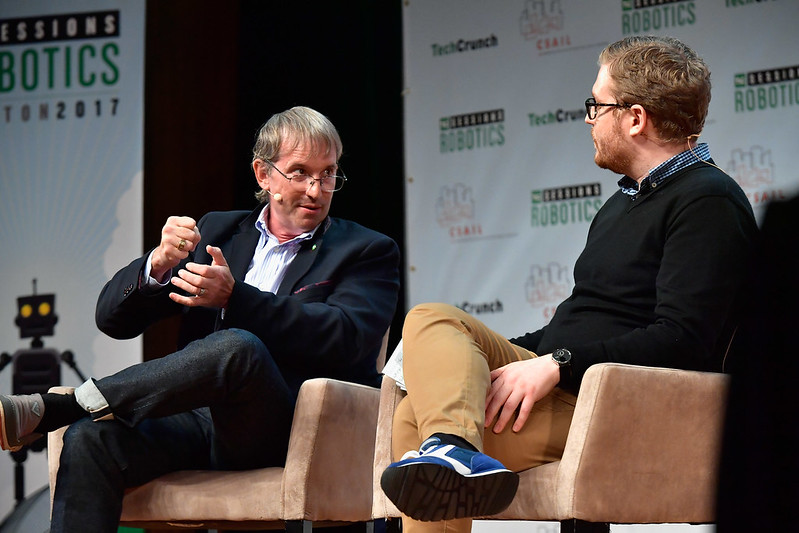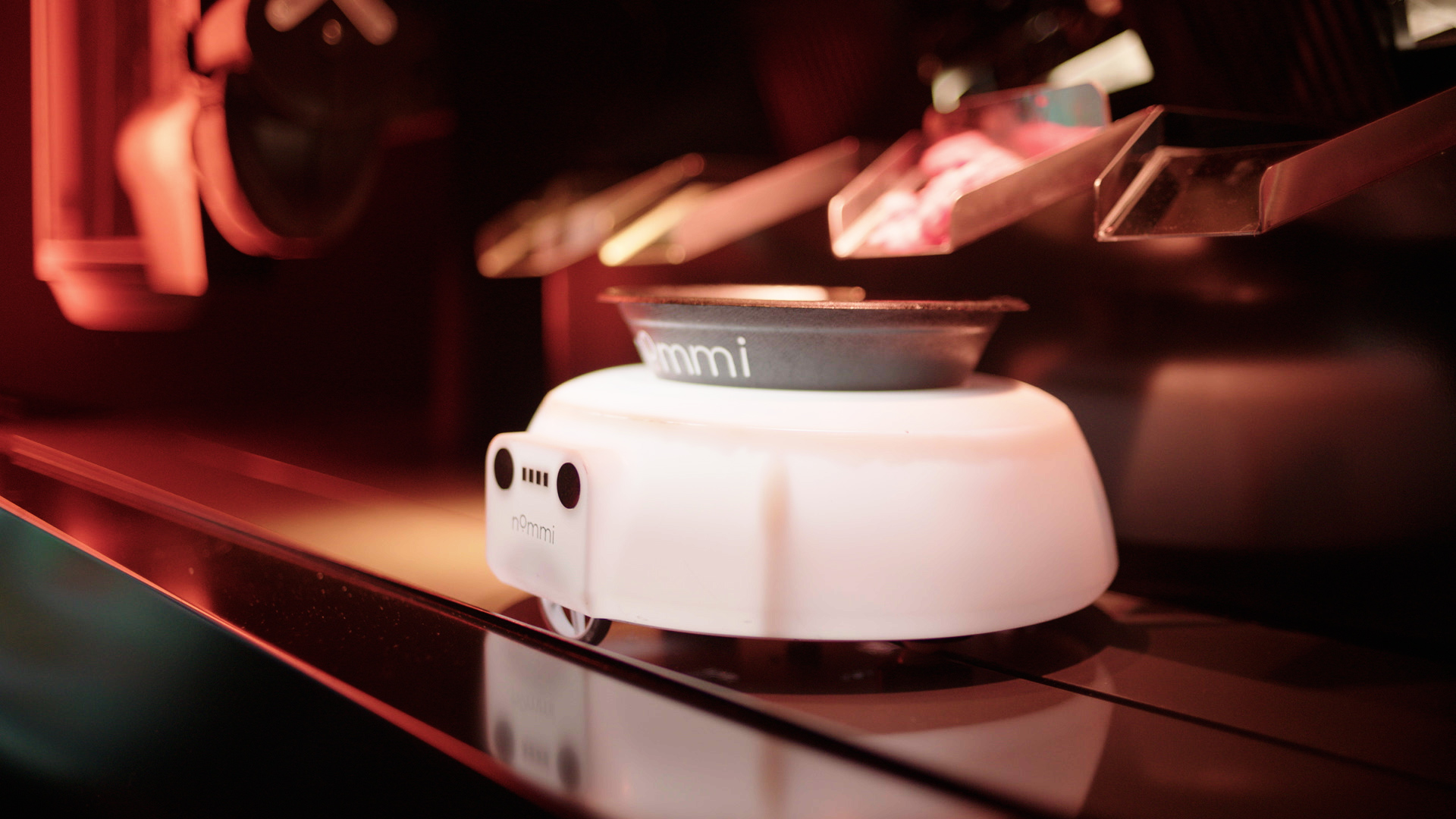I’ve been up to my neck in CES planning — and, I suppose, unplanning this week. There’s a strange disconnect getting pitches for the one millionth UV light sanitizing robot while you’re weighing the pros and cons of attending a show in-person, amid the latest variant surge. Ultimately, we’ve decided not to go to Vegas this time, but I’m anticipating we’ll still have plenty to discuss for the newsletter in a few weeks.
Nearly two years later, it feels so strange to note that CES and then our Robotics Session were the last events I attended in person. Having played a role in organizing the latter and heading up TechCrunch’s CES efforts, I understand well how important it is to not take these decisions lightly.
And I certainly feel there’s still a benefit for me in attending conferences in person, particularly when it comes to evaluating robots. There’s a limitation to how good a look you can get at a robot via a Zoom call.
If anything, all of this has really driven home how mainstream adoption of robotics systems feels, at once, extremely close and still a ways off. Anecdotally, I can tell you that I’ve gotten far more robotics pitches for this CES — a show that’s designed to be the bellwether for the year to follow. They represent a wide range, from consumer to industrial — and everything in between.
The pandemic has undoubtedly accelerated excitement and investments in the industry, but the actual speed of adoption varies greatly from category to category. The two examples we’ve looked at thus far for our year-end roundup are reasonably far along. Like manufacturing before it, warehouse and fulfillment robotics are very much a reality right now. If you’ve recently purchased something online, there’s a pretty good chance a robot helped get it to you at some point along the line.
Delivery robots are tougher. There are a number of pilots out there, and depending on where you live (especially if it’s anywhere near a college campus), you may have seen one of them cruising by — even if it hasn’t gotten your food to you directly. Sidewalks are, generally, less controlled spaces than warehouses and there’s regulatory red tape to deal with in terms of getting them out into the world, so in spite of all of the funding, don’t expect to wake up tomorrow to sidewalks saturated by robots.
This week I want to talk to you about who — or, perhaps, what — is actually making the food that those robots may or may not be delivering to your door.

Image Credits: (Photo by Paul Marotta/Getty Images for TechCrunch)
Before we get into it, we asked iRobot co-founder and CEO Colin Angle to reflect on the past year in robotics and give us a prediction for the year to come.
What was the defining robotics / AI / automation trend of 2021? Warehouse automation, assisted driving technology — and poop detection, of course — were all areas where we saw breakthroughs in 2021. It was a remarkable year when the meteoric rise in online shopping (which almost broke 2020) seemed to work remarkably well, due largely to major investments in automation. I actually saw TV commercials for autonomous-driving trucks targeted at Middle America. Is this really happening? And I am proud to say one of the dirty, rarely discussed challenges of robot vacuuming is now in the rearview mirror, with the advent of high-reliability visual object recognition at a consumer price point. I think it’s safe to say 2021 was a transformational year for robots.
What will 2022 bring for these categories? As we move into 2022, I would love to see real progress on the smart home people have been waiting for. In the current version of the smart home, complexity is too high, and usability is too low — but the tools are coming into place for experience-first ecosystems to emerge and begin to grow in capability and system simplicity. So I look to 2022 as not just a year of continued industry acceleration among the regular suspects, but also one in which we’ll see a significant step forward in the thoughtful integration of robotics into our daily lives. It’s exciting to see momentum growing on so many fronts!
And now for one of the most uncomfortable segues I’ve had to make in my long and illustrious career, we move from poop detection to food prep [leaving a note here for when corporate asks why my new newsletter lost all of its subscribers in its third week].

Food shoot in the test kitchen of the Los Angeles Times via Getty Images of a pizza margherita being removed from the brick oven shot on March 11, 2009. (Photo by Anne Cusack/Los Angeles Times via Getty Images)
This past year was a big one for robotic food preparation. Prior to the pandemic, prominent startups involved in the space were few and far between. Some — including, notably, Zume Robotics — pivoted out of the category. But along with an influx in venture capital for robotics at large comes increases in automating the restaurant business. The primary reasons are two you probably know by heart nearly two years into this thing. First, there’s a massive staffing shortage in the U.S. Second, robots don’t get sick — nor do they get people sick.
If I had to sum up the current state of food robotics in four words, they would be:
- Pizza
- Bowls
- Fastfood (yes, I cheated by making this one word)
- Kiosks

Image Credits: Picnic
The first two sit at the top of the list for similar reasons. If you’re going to automate a food, it needs to be something that’s popular and relatively uniform. Sure, there are a ton of different toppings, but for a robot, making pizza is a fairly straightforward experience: dough, sauce, cheese, topping, cook, repeat. Companies like Picnic and XRobotics are looking to pick up where Zume left off.

Image Credits: Spyce
Bowls fill a similar niche. They’ve grown in popularity in recent years and work around a fairly basic template. Even with variations between toppings and bases like salad, quinoa and the like, the principle is fairly simple. So it’s probably no surprise that California-based fast casual salad chain Sweetgreens leaned in back in August with its acquisition of MIT spinout, Spyce. The move followed a similar acquisition by DoorDash, which purchased salad making robotics firm Chowbotics in February.
Miso leads the fast food charge at the moment, with a number of big partnerships announced. The company’s hamburger-flipping and fry-cooking robot can’t replace a kitchen staff outright just yet, but it’s getting more and more capable, generation after generation.

Image Credits: Nommi
Kiosks, meanwhile, are designed to largely take humans out of the equation. The solution has been gaining a lot of steam of late, courtesy of the aforementioned labor shortage. Human interaction with the systems are largely limited to loading, maintenance and ordering. But with the right technology, you can effectively have a self-contained kitchen preparing fresh food with the push of a button, as seen with products like Nommi, whose recent deal with C3 brings food from Iron Chef’s Masaharu Morimoto to the 24/7 food prep machine.
As for this week’s news, things have slowed down a bit, ahead of the holiday. We did, however, manage to get a glimpse of what Hyundai is cooking up for this CES. The automaker has really doubled down on its robotics efforts, including its acquisition of Boston Dynamics. The new Mobile Eccentric Droid (MobED) is a platform in every sense. It is a literal one; a four-wheel mobility device with a staging area in the middle. It can also house a range of different features, from teleconferencing to package delivery to smart baby carriage.

Image Credits: Hyundai
Of its stabilizing technology, Hyundai says:
The eccentric mechanism-based posture control system also stabilizes the body attitude by adjusting the height of each wheel according to the ground environment. The MobED’s 12-inch pneumatic tires further help to absorb bumps and vibrations.
Tiger Global, meanwhile, continues its spending spree. This week the firm led a $30 million Series B for Pasadena, California’s Elementary. The round, which also features Fika Ventures, Fathom Capital, Riot VC and Toyota Ventures, brings the machine vision startup’s total funding to $47.5 million. Founder and CEO Arye Barnehama tells TechCrunch:
During the pandemic, manufacturing and logistics have undergone major labor shortages that were already beginning before the pandemic but were significantly increased. As companies look to continue to automate without having to rely on expensive and hard to find engineering talent, our business has scaled because we are able to provide them with no-code AI solutions.
Before we go, a $7 million round Series A from Unbox Robotics. 3one4 Capital led the round for the India-based logistics robotics company. Sixth Sense Ventures and Redstart Labs also participated, as did a number of existing investors, including SOSV. The company says the funding will go toward hiring, tech development and expanding into new territories.

Image Credits: Bryce Durbin/TechCrunch
Didn’t get what you wanted this holiday season? Have you considered treating yourself to a free weekly robotics newsletter?
